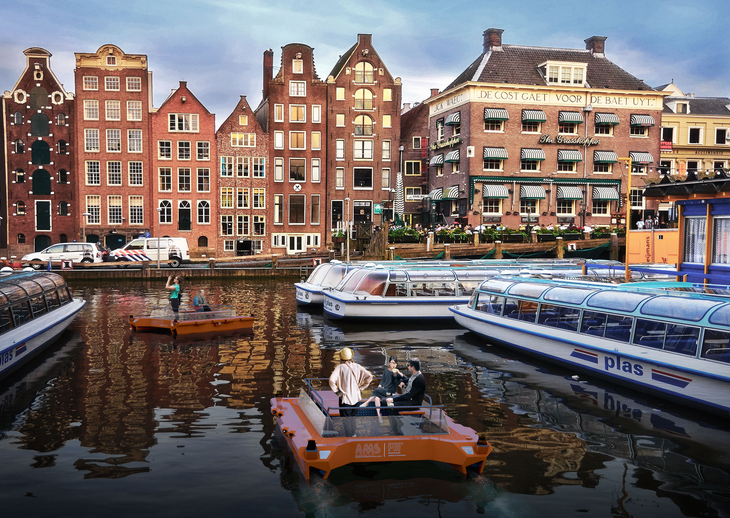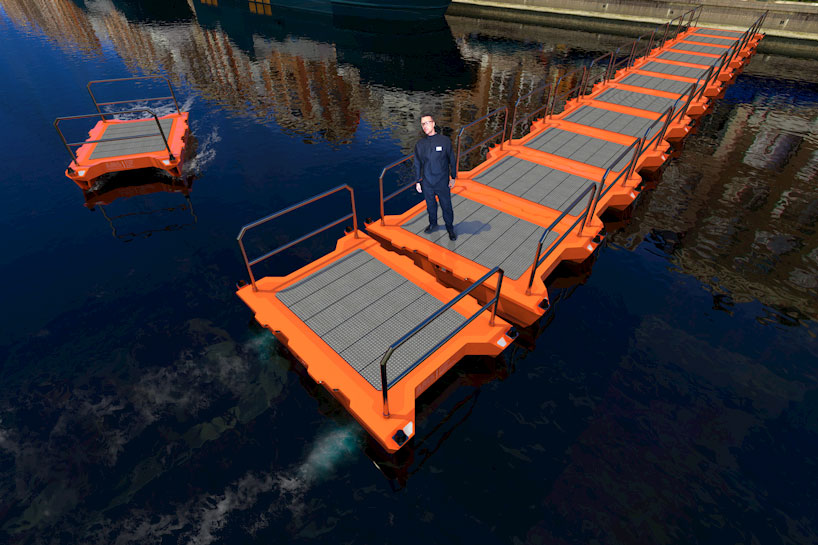A fleet of self-driving boats that can link up to form bridges and performance stages will roam the canals of Amsterdam in a pilot scheme launched by the Massachusetts Institute of Technology (MIT) and the Amsterdam Institute for Advanced Metropolitan Solutions (AMS).
Structures formed by the “Roboats” can be “assembled or disassembled in a matter of hours” according to Carlo Ratti, MIT professor and founding partner of Carlo Ratti Associati.

Arjan van Timmeren, AMS Institute’s scientific director, said: “Roboats offer enormous possibilities as we’ll also be exploring environmental sensing.
“We could, for instance, do further research on underwater robots that can detect diseases or use Roboats to rid the canals of floating waste and find a more efficient way to handle the 12,000 bicycles that end up in the city’s canals each year.”
The project is due to last five years and has been awarded funding of $25m.

MIT will work on the scheme with the Delft University of Technology and Wageningen University.
The next stage of testing will begin in September.
Images courtesy of MIT/AMS
Comments
Comments are closed.











Very promising, especially when scaling up to the triple size and redesign them a bit in a way that these roboats can couple automaticly along each other.
It’s still a boat / vessel/barge / punt, requires manuvering, specially when the battery is dead, so at each corner include a 10cm semicircular recess for a sculling oar to be used to provide propulsion in every direction.
Cleats are vital also,even though this is schematic, these are fundamental requirements.
Sockets for stanshons and masts too.